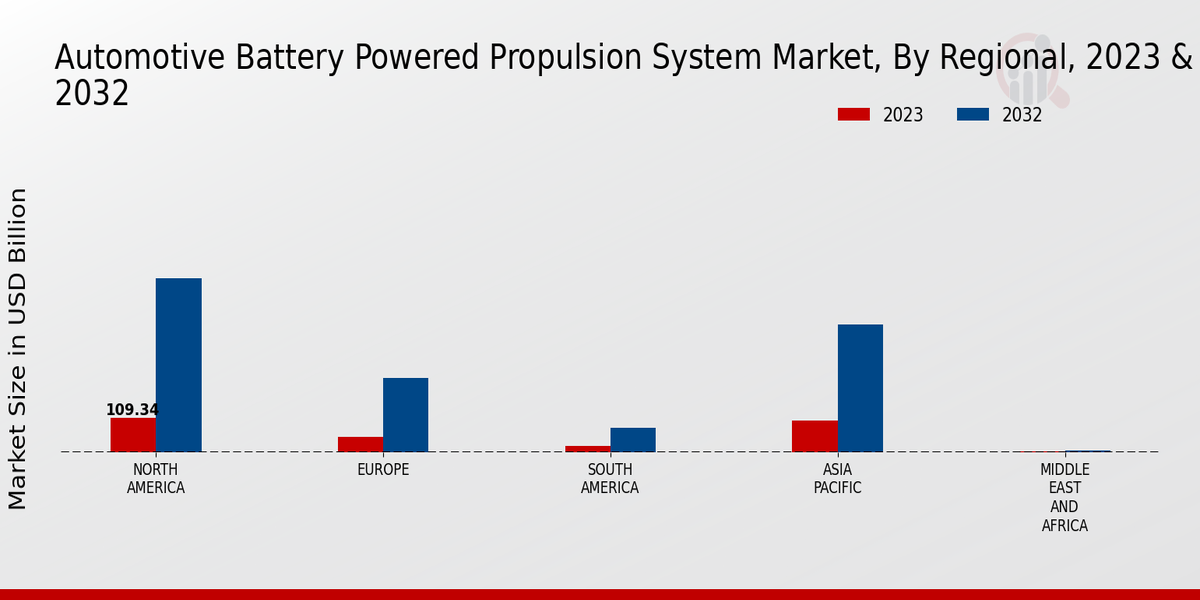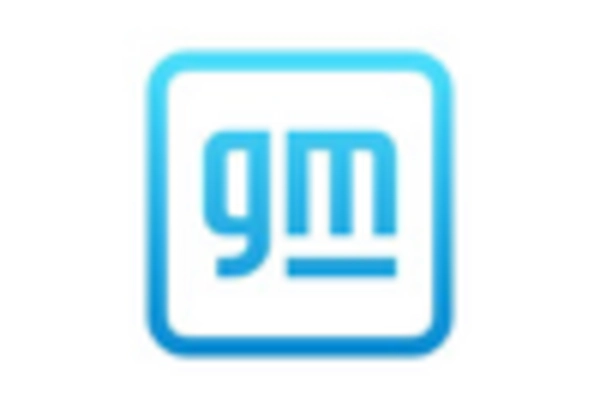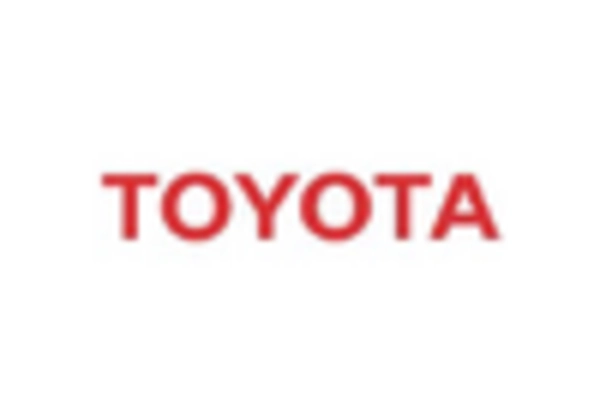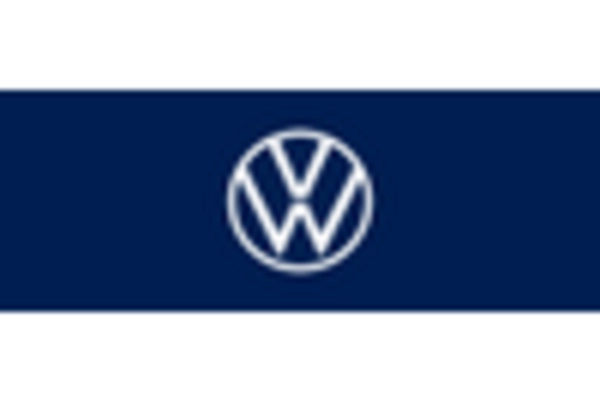Government Policies and Support
Government policies play a pivotal role in shaping the Automotive Battery Powered Propulsion System Market. Many governments are implementing stringent emissions regulations and offering incentives for electric vehicle purchases, which are encouraging consumers to opt for battery-powered vehicles. These policies often include tax rebates, grants, and subsidies aimed at reducing the initial cost of electric vehicles. Furthermore, investments in research and development for battery technologies are being supported by public funding, which enhances innovation within the industry. As these initiatives continue to evolve, they are likely to create a more favorable environment for the growth of the Automotive Battery Powered Propulsion System Market, fostering a transition towards cleaner transportation solutions.
Enhanced Charging Infrastructure
The expansion of charging infrastructure is a critical driver for the Automotive Battery Powered Propulsion System Market. As more charging stations are installed in urban and rural areas, the convenience of owning an electric vehicle increases. This development alleviates range anxiety, a significant barrier to electric vehicle adoption. Reports indicate that the number of public charging stations has been steadily increasing, with projections suggesting a doubling of charging points within the next five years. This enhanced infrastructure not only supports existing electric vehicle owners but also encourages potential buyers to transition to battery-powered vehicles, thereby stimulating growth in the Automotive Battery Powered Propulsion System Market.
Increasing Fuel Prices and Economic Factors
Rising fuel prices are compelling consumers to consider alternatives to traditional combustion engines, thereby propelling the Automotive Battery Powered Propulsion System Market. As gasoline and diesel prices fluctuate, electric vehicles present a cost-effective solution for daily commuting. The total cost of ownership for electric vehicles is becoming increasingly favorable, with lower maintenance costs and the potential for reduced energy expenses. Economic factors, including government subsidies and incentives for electric vehicle purchases, further enhance the attractiveness of battery-powered propulsion systems. This shift in consumer behavior indicates a growing acceptance of electric vehicles, which is likely to bolster the Automotive Battery Powered Propulsion System Market in the near future.
Consumer Demand for Sustainable Transportation
There is a notable shift in consumer preferences towards sustainable transportation solutions, which is significantly influencing the Automotive Battery Powered Propulsion System Market. As awareness of climate change and environmental issues grows, consumers are increasingly seeking eco-friendly alternatives to traditional vehicles. This trend is reflected in market data, which shows a substantial increase in electric vehicle sales, with some regions reporting a year-on-year growth of over 30 percent. The demand for zero-emission vehicles is likely to continue rising, driven by both consumer choice and regulatory pressures. Consequently, manufacturers are prioritizing the development of battery-powered propulsion systems to meet this evolving demand, thereby propelling the Automotive Battery Powered Propulsion System Market.
Technological Innovations in Electric Vehicles
The Automotive Battery Powered Propulsion System Market is experiencing a surge in technological innovations, particularly in battery efficiency and energy density. Advances in lithium-ion and solid-state batteries are enhancing vehicle range and reducing charging times. For instance, the introduction of fast-charging technologies allows electric vehicles to recharge significantly quicker, making them more appealing to consumers. As manufacturers invest in research and development, the market is projected to grow, with estimates suggesting a compound annual growth rate of over 20 percent in the coming years. This technological evolution not only improves performance but also addresses consumer concerns regarding battery longevity and reliability, thereby driving the Automotive Battery Powered Propulsion System Market forward.


















Leave a Comment